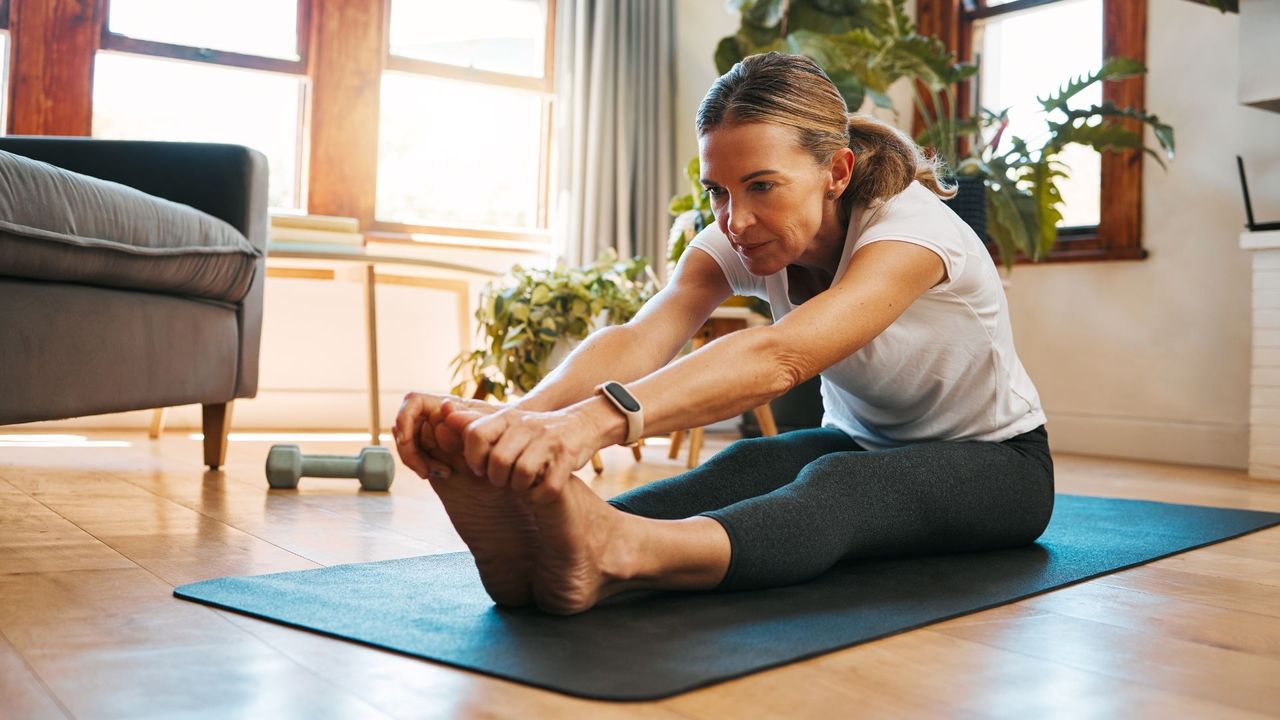
The lower back is a complex network of muscles that overlap each other and wrap around our spine and core, keeping organs safe and stabilising the body. With daily movement, exercise, and hours spent sitting down, it's no surprise that many people suffer from tightness in this area.
For many people, this tightness can be relieved with back exercises and stretching. "If stretching helps, you're likely dealing with muscle tightness [rather than weak or unstable muscles] and simple mobility exercises or foam rolling should provide noticeable relief," Michelle D’Onofrio, a certified Pilates instructor and director at YATTA Studio, tells woman&home.
But which lower back stretches should you do? While most of us will know how to stretch our legs and arms from P.E lessons at school, if nowhere else, stretching out these muscles always feels harder to do. Here, Michelle reveals her go-to lower back stretches and how to do them right.
What stretches are good for the lower back?
In general, stretches and exercises with a Pilates focus will be good for easing lower back discomfort, says Michelle. "Pilates teaches mindful movement - activating the right muscles at the right time - helping you move more efficiently in everyday life," she says.
Grab your favourite thick yoga mat for a little more support and try these lower back stretches:
1. Pelvic curl
The pelvic curl is a "foundational Pilates move that strengthens the glutes and hamstrings, while gently articulating the spine," says Michelle. "It's perfect for releasing stiffness through the lower back."
Here's how to do it:
- Lie on your back with knees bent, feet hip-width apart, arms long by your sides.
- Inhale to prepare.
- Exhale, gently press through your feet and tilt your pelvis so your lower back imprints on the mat.
- Continue rolling the spine up one vertebra at a time until your hips are lifted, forming a diagonal line from knees to shoulders.
- Inhale at the top, then exhale to roll back down slowly, keeping the movement smooth and controlled.
- Repeat 6 to 8 times.
Expert tip: As you lift, be sure to engage your glutes (as you would do in a glute exercise) by squeezing them, but remember to keep your core engaged, too.
2. Spine Twist Supine (Knees Side-to-Side)
The spine twist is a gentle rotational exercise, says Michelle, that helps stretch out the muscles by "releasing tightness across the lower back and obliques". It also mimics natural movements like twisting your upper body and looking over your shoulder, which mobilises the spine and improves stability.
Here's how to do the spine twist:
- Lie on your back with knees bent, feet together, and arms extended out to the sides.
- Inhale to prepare.
- Exhale and let both knees move to one side while keeping your shoulders anchored to the mat.
- Inhale to bring the knees back through the centre.
- Exhale and move to the other side.
- Repeat 6 to 8 times, alternating sides.
Expert tip: Take a deep breath in when you're set up for the movement, before you move your arms, neck, or legs. Then, when you're ready, breathe out as you move - it should help you relax enough to feel the stretch.
3. Forward spine stretch
If you're a fan of home Pilates workouts, then you'll know this "classic Pilates move is deceptively simple", as Michelle says. "It lengthens the entire back line of the body, creates space between the vertebrae, and helps release lower back tension caused by tight hamstrings or a compressed spine."
Here's how to do the forward spine stretch:
- Sit tall on your mat with your legs extended in front of you, feet about hip-width apart
- Reach your arms forward at shoulder height, palms facing down.
- Inhale to sit even taller, feeling the crown of your head lift toward the ceiling.
- Exhale and begin to nod your chin slightly, then round forward through your spine - imagine “rolling” your vertebrae one by one off an imaginary wall behind you.
- Reach your fingertips toward your toes, keeping your abdominals engaged and your shoulders relaxed.
- Inhale to hold the stretch, then exhale to articulate back up to a tall seated position.
- Repeat 5 to 6 times.
Expert tip: If your hamstrings are tight, Michelle recommends "slightly bending your knees" to make it easier to get into the forward bend.
What causes lower back tightness?
- Poor posture: "Spending hours hunched over a computer or phone can lead to rounded shoulders and improper spinal alignment," says D’Onofrio. "Over time, this misalignment can strain muscles and ligaments, especially in the lower back."
- Imbalances: It's very common to be stronger on one side of your body than the other, but this is a muscle imbalance that causes problems like lower back discomfort.
- A sedentary lifestyle: "Long periods of sitting reduce circulation, creating a feeling of stiffness in the back and weakening supporting muscles," she says. This combination can make your back prone to aches and pains.
- Poor form in exercise: "Sometimes back pain isn’t from too little movement but from repetitive movement done without proper alignment, like lifting, twisting, or even exercising without engaging the core correctly," she says.
Strengthening vs stretching
If lower back stretches don't offer relief from the discomfort, you may be dealing with weak or unstable glutes, the instructor says. No amount of stretching is going to solve that, so you'll have to pivot to glute exercises and back strengthening moves.
"You might feel better after doing glute bridges, planks, or core exercises rather than stretching alone," she suggests.
Should I stretch if my lower back hurts?
If you have lower back pain, rather than just some discomfort or tightness, then you should consult a physiotherapist or doctor before stretching as some movements can make this worse.
For those with minor niggles, stretching can be very effective, but be sure to stop stretching if the feeling becomes painful or you start to experience discomfort in another area.







